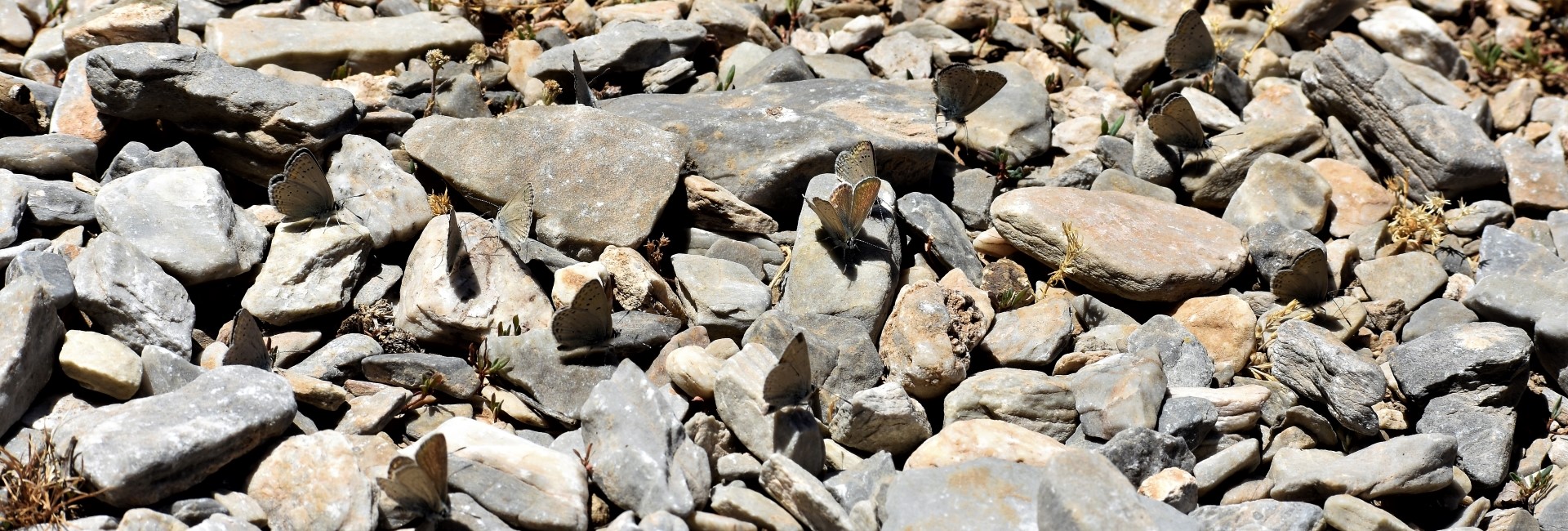Appearance
The adults are typically small to tiny and often brilliantly colored-iridescent blues, bright reds, and oranges. Some species have characteristic metallic colors due to the special construction of the scales. Male and female generally differ in color; usually blue for male and brown for female.
Most of the species have characteristic marks on the wings, looking like small eyes (ocelli), usually black surrounded by white. Some species have small tails on the hindwing.
Adults of both sexes have three pairs of walking legs, males have short forelegs with one tarsal segment while females have normal forelegs with four tarsal segments and no claws. Adult individuals often have hairy antenna-like tails complete with black and white annulated appearance.

